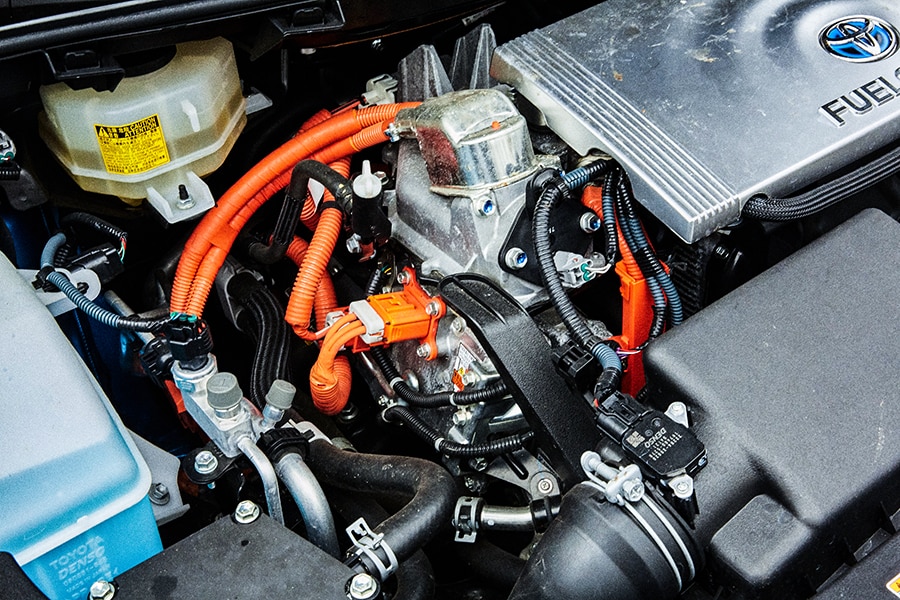
The gospel of hydrogen power
Ever since Musk called fuel cells "staggeringly dumb," there has been a fierce rivalry between lithium-ion and hydrogen backers
 The hydrogen fuel cell of a Toyota Mirai, one of the two Toyota Mirais owned by Mike Strizki, at his home in Ringoes, N.J., Dec. 1, 2020. Strizki powers his house and cars with hydrogen he home-brews; Image: Kat Slootsky/The New York Times
The hydrogen fuel cell of a Toyota Mirai, one of the two Toyota Mirais owned by Mike Strizki, at his home in Ringoes, N.J., Dec. 1, 2020. Strizki powers his house and cars with hydrogen he home-brews; Image: Kat Slootsky/The New York Times
(Circuits)
In December, the California Fuel Cell Partnership tallied 8,890 electric cars and 48 electric buses running on hydrogen batteries, which are refillable in minutes at any of 42 stations there. On the East Coast, the number of people who own and drive a hydrogen electric car is somewhat lower. In fact, there is just one. His name is Mike Strizki. He is so devoted to hydrogen fuel-cell energy that he drives a Toyota Mirai even though it requires him to refine hydrogen fuel in his yard himself.
“Yeah I love it,” Strizki said of his 2017 Mirai. “This car is powerful, there’s no shifting, plus I’m not carrying all of that weight of the batteries,” he said in a not-so-subtle swipe at the world’s most notable hydrogen naysayer, Elon Musk.
Strizki favors fuel-cell cars for the same reasons as most proponents. You can make fuel using water and solar power, as he does. The byproduct of making hydrogen is oxygen, and the byproduct of burning it is water. Hydrogen is among the most plentiful elements on earth, so you don’t have to go to adversarial countries or engage in environmentally destructive extraction to get it. The car is as quiet to drive as any other electric, it requires little maintenance and, because it doesn’t carry 1,200 pounds of batteries, has a performance edge.
His infatuation with hydrogen began with cars, but it didn’t end there. In 2006 he made the first house in the United States to be powered entirely by hydrogen produced on site using solar power. Nine years later he made the second. He says he has built hydrogen-power home systems for conservationists and celebrities — one of his systems reportedly powers Johnny Depp’s private island in the Bahamas.
©2019 New York Times News Service




